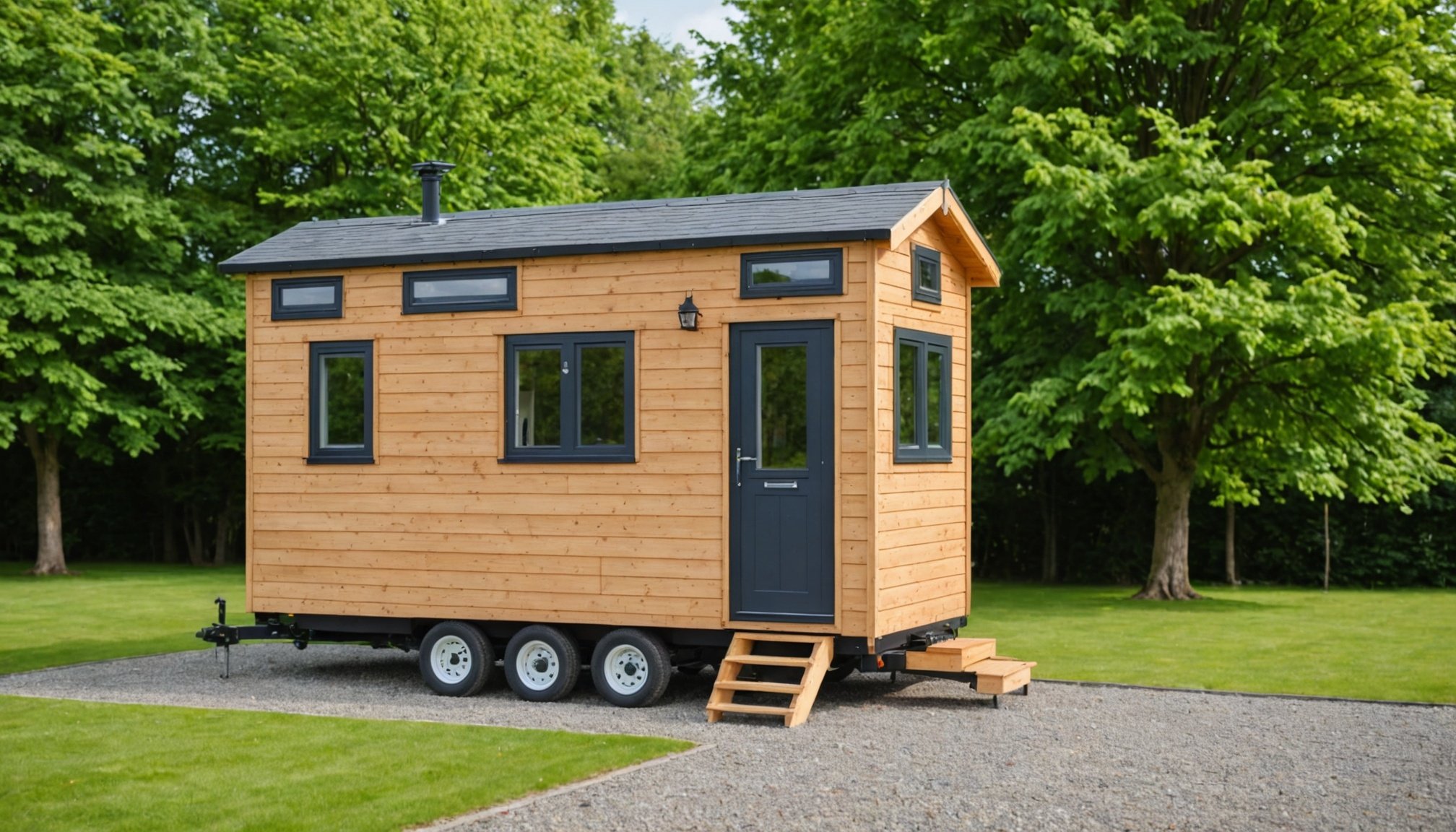Tiny homes represent more than just a trend; they embody a new lifestyle that prioritizes simplicity and sustainability. However, building one in your backyard can be daunting due to varying legal restrictions and permissions. Understanding the specific regulations in the UK is vital to transforming your tiny home dream into reality. This guide breaks down essential legal considerations and practical steps, empowering you to embrace a tiny living solution that suits your needs. Unlock the door to your backyard dreams today!
Understanding Tiny Home Regulations in the UK
Navigating tiny home regulations in the UK can be complex due to varying UK building laws and the necessity for planning permission. Zoning laws play a crucial role in determining where tiny homes can be situated. These laws are established by local councils and can differ significantly across regions. In general, tiny homes must comply with the same zoning laws applicable to other residential properties.
A voir aussi : Transform Your UK Loft Conversion: A Guide to Creating an Affordable Cooling System
Obtaining planning permission is often a critical step. This permission ensures that the tiny home adheres to local regulations and fits within the community's planning framework. The process involves submitting detailed plans and possibly undergoing inspections to verify compliance with safety and environmental standards. Without planning permission, homeowners risk facing legal challenges or being required to relocate their homes.
Differences in regulations across the UK can complicate the process further. For instance, Scotland, Wales, and England each have distinct building codes and planning policies. These differences mean that what is permissible in one region may not be allowed in another. Therefore, it's essential to research and understand the specific requirements of the area where you plan to place your tiny home. Engaging with local planning authorities can provide clarity and help avoid potential pitfalls.
A découvrir également : Transform Your UK Loft Conversion: A Guide to Creating an Affordable Cooling System
Planning Permission Insights
Understanding the intricacies of planning permission is vital for successful tiny home construction. Engaging with your local authority is often the first step in ensuring compliance and avoiding future complications.
Types of Planning Permissions
There are several types of planning permissions you might encounter. Full planning permission is necessary for most new constructions, including tiny homes. Outline planning permission may be sought initially to establish the principle of development without detailed plans. Permitted development rights might apply in some cases, allowing certain works without full permission. Knowing which type applies can streamline your process.
Application Process
The application process involves several steps. First, consult with the local authority to understand specific requirements. Prepare detailed plans and documents, including site layouts and design specifications. Submit these to the planning department, and be prepared for a public consultation period where local residents can express concerns. Finally, await a decision, which can take several weeks.
Common Challenges in Obtaining Permission
Applicants often face challenges such as objections from neighbours or non-compliance with local planning frameworks. To overcome these, maintain open communication with the local authority and address concerns proactively. Understanding the community's needs and demonstrating how your tiny home aligns with local development goals can be beneficial.
Building Regulations Overview
Navigating building regulations is crucial for anyone considering a tiny home in the UK. These regulations ensure that homes meet necessary safety standards and are fit for habitation. Key building regulations affecting tiny homes include structural integrity, fire safety, and accessibility. Compliance with these standards is not just a legal obligation but also a way to ensure the safety and comfort of occupants.
During construction, tiny homes must adhere to specific safety standards. This includes using approved materials, ensuring proper ventilation, and installing fire alarms. Additionally, electrical systems and plumbing must meet British Standards. These measures are in place to prevent hazards and protect residents.
Failing to meet building regulations can lead to serious consequences. Homeowners might face fines, legal actions, or be required to make costly modifications to their homes. In some cases, authorities may even demand the removal of non-compliant structures. Therefore, understanding and adhering to these regulations from the outset is essential.
Engaging with professionals familiar with tiny home compliance can help navigate these requirements effectively. Their expertise can prevent potential pitfalls and ensure that your tiny home not only meets legal standards but also provides a safe and comfortable living environment.
Land Use and Restrictions
Understanding land use and property restrictions is crucial when planning a tiny home in the UK. These factors determine where and how you can construct your tiny home, impacting your project's feasibility and compliance with local regulations.
Assessing Your Property
Before embarking on your tiny home journey, it's essential to assess your property for tiny home feasibility. Evaluate the available space, ensuring it can accommodate the home while adhering to local zoning laws. Consider access to utilities and whether the land can support the necessary infrastructure.
Understanding Neighbourhood Restrictions
Neighbourhood restrictions can significantly influence your tiny home project. Many communities have specific guidelines regarding the size, appearance, and placement of structures. These rules are designed to maintain the area's aesthetic and property values. Familiarise yourself with these restrictions to avoid potential disputes with neighbours or local authorities.
Environmental Considerations
Environmental factors are another critical aspect to consider before starting backyard construction. Assess the land's topography and soil quality to ensure stability and safety. Additionally, consider the impact on local wildlife and ecosystems. Implementing eco-friendly practices can help mitigate negative effects and align your project with environmental standards.
Case Studies and Testimonials
Exploring tiny home success stories offers valuable insights into the practicalities and benefits of living in compact spaces. Real-life examples highlight how individuals have creatively navigated challenges to create functional and stylish homes. These homeowner experiences provide inspiration and practical tips for those considering a similar lifestyle.
Real-Life Examples
Several case studies illustrate the versatility and adaptability of tiny homes. For instance, a family in Devon successfully built their tiny home using sustainable materials, achieving energy efficiency and reducing their carbon footprint. Their journey underscores the importance of planning and resourcefulness.
Homeowner Experiences
Testimonials from tiny home owners often reveal a deep sense of satisfaction and freedom. One owner from Yorkshire shared how downsizing allowed them to focus on experiences rather than possessions, leading to a more fulfilling life. These stories emphasize the positive impact of simplifying one's living space.
Lessons Learned
Lessons from various case studies highlight the importance of thorough research and community engagement. Many homeowners stress the need to understand local regulations and seek professional advice. Their experiences demonstrate that, while challenges exist, the rewards of tiny home living can be substantial.
Resources and Further Guidance
Navigating the complexities of tiny home regulations in the UK requires access to reliable legal resources and planning guidance. These resources can help ensure compliance and provide support throughout your tiny home journey.
Key Legal Contacts
Engaging with key legal contacts is crucial for understanding the legalities of tiny home living. Solicitors specialising in property law can offer advice tailored to your situation. They can assist with interpreting zoning laws and obtaining necessary permissions. Additionally, contacting local council planning departments provides direct insights into regional regulations.
Helpful Government Websites
Several government websites serve as valuable resources for tiny homeowners. The Planning Portal is a comprehensive guide to planning and building regulations across the UK. It offers tools to determine whether planning permission is required for your project. Another useful site is the Gov.uk portal, which provides detailed information on building regulations and legal requirements for residential properties.
Community Support Groups
Joining community support groups can offer practical advice and shared experiences. Online forums and local meetups connect aspiring tiny homeowners, fostering a sense of community. These groups often share tips on overcoming regulatory hurdles and offer encouragement throughout the planning and building process. Engaging with others can provide moral support and innovative solutions.
Visual Aids for Clarity
Visual aids such as infographics and charts play a crucial role in simplifying complex regulations related to tiny homes in the UK. These visual resources can transform dense legal text into understandable formats, making it easier for homeowners to grasp essential information quickly.
Infographics are particularly effective in breaking down intricate zoning laws and planning permissions. For instance, a well-designed infographic might illustrate the steps involved in obtaining planning permission, from initial consultation to final approval. Such visual tools can highlight key requirements and timelines, helping to streamline the planning process.
Charts can also be invaluable, especially when comparing regulations across different regions. A chart detailing building code differences between England, Scotland, and Wales can provide homeowners with a clear overview, aiding in compliance and decision-making.
Creating your own visual resources can be straightforward. Start by identifying the most critical information you need to convey. Use software tools to design clear and concise graphics. Ensure your visuals are not cluttered and focus on the most relevant data. By incorporating these visual aids into your planning, you can enhance understanding and facilitate smoother navigation through the regulatory landscape.











